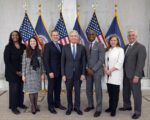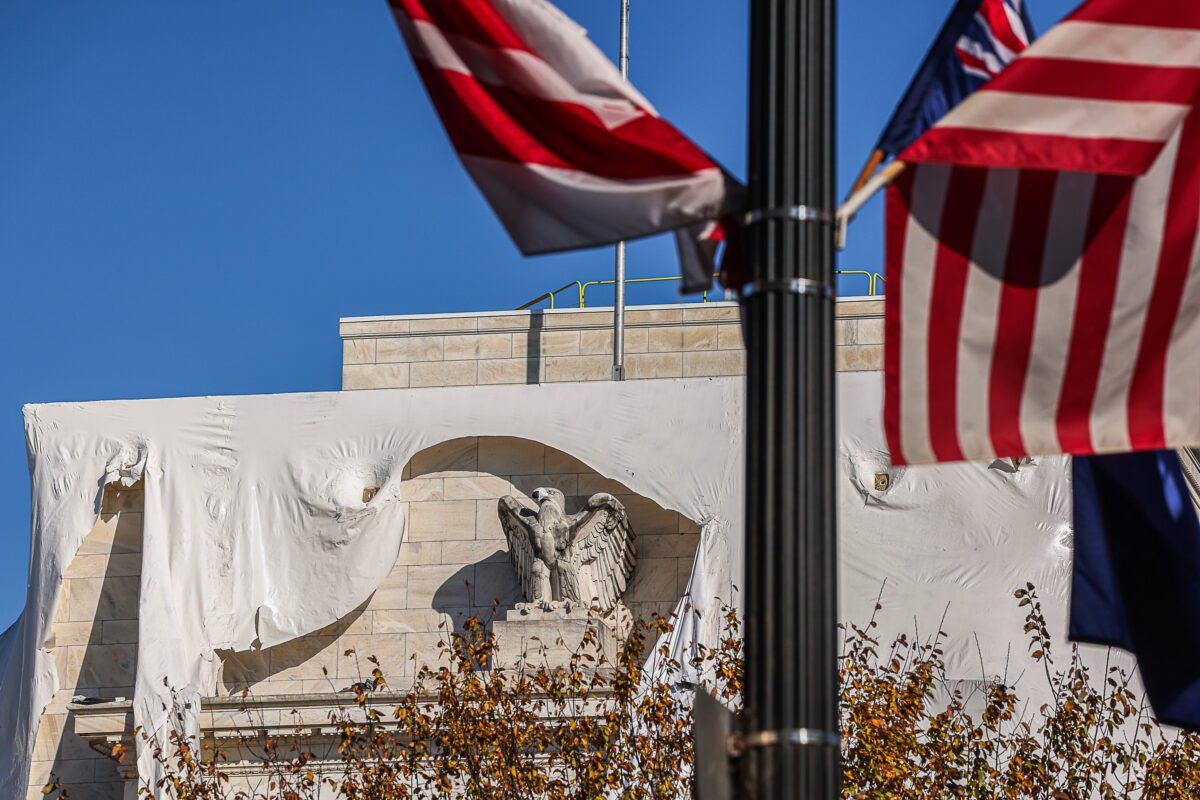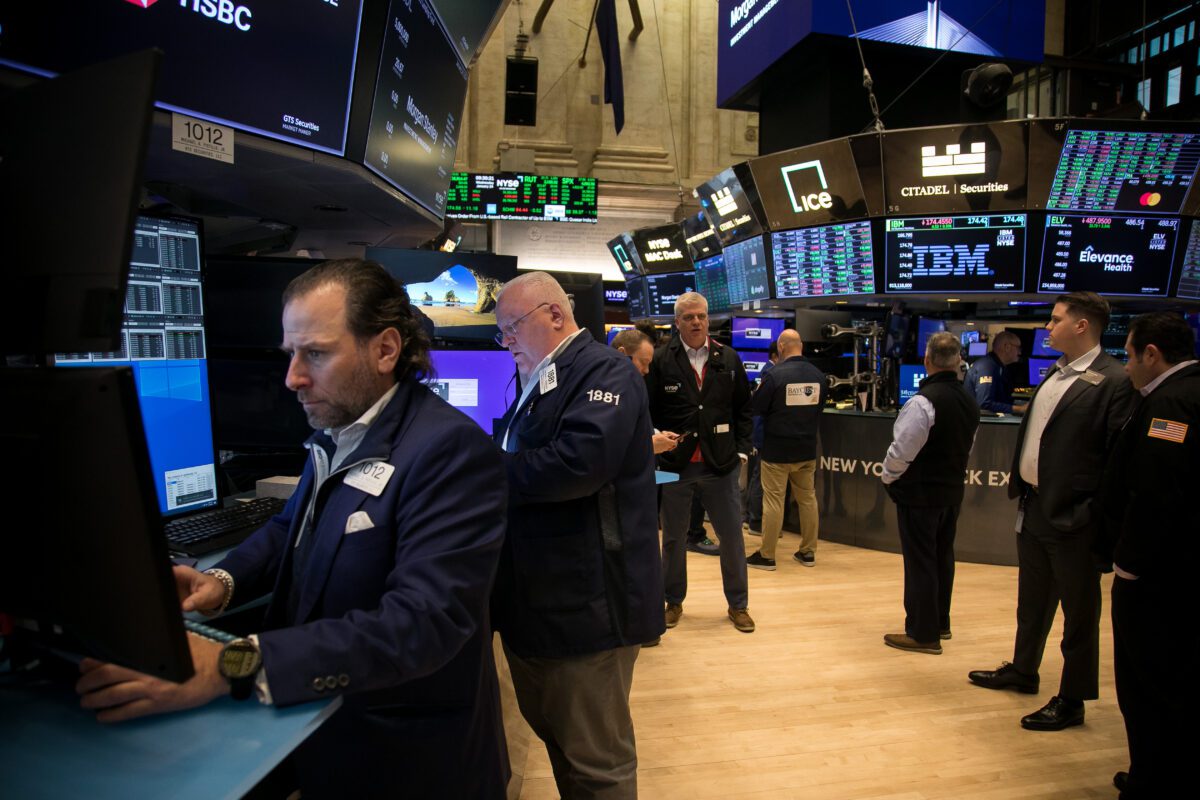Participants‘ Views on Current Conditions and the Economic Outlook
In conjunction with this FOMC meeting, members of the Board of Governors and Federal Reserve Bank presidents submitted their projections of the most likely outcomes for real GDP growth, the unemployment rate, inflation, and the federal funds rate for each year from 2015 through 2018 and over the longer run.3 Each participant’s projections were conditioned on his or her judgment of appropriate monetary policy. The longer-run projections represent each participant’s assessment of the rate to which each variable would be expected to converge, over time, under appropriate monetary policy and in the absence of further shocks to the economy. These projections and policy assessments are described in the Summary of Economic Projections, which is an addendum to these minutes.
In their discussion of the economic situation and the outlook, meeting participants viewed the information received over the intermeeting period as indicating that economic activity was expanding moderately and confirming that underutilization of labor resources had diminished appreciably since early in the year. Participants‘ outlook indicated that, with gradual adjustments in the stance of monetary policy, real GDP would continue to increase at a moderate rate over the medium term and that labor market indicators would continue to strengthen. They anticipated that the relative strength in domestic demand would be only partially offset by some further weakness in net exports. Participants generally saw the downside risks to U.S. economic activity from global economic and financial developments, although still material, as having diminished since late summer. In addition, new and revised information on employment in recent months had reduced earlier concerns about a possible slowing of progress in the labor market. Accordingly, taking into account domestic and international developments, most participants judged the risks to the outlook for both economic activity and the labor market to be balanced.
Incoming data indicated that inflation continued to run below the Committee’s 2 percent longer-run objective, partly reflecting declines in energy prices and prices of non-energy imports. The price of crude oil fell further over the intermeeting period, and many participants lowered their near-term forecasts for inflation somewhat while leaving their medium-term forecasts little changed. Nearly all continued to anticipate that inflation would rise to or very close to 2 percent over the medium term as the transitory effects of declines in energy and import prices dissipated and the labor market strengthened further. Over the intermeeting period, market-based measures of inflation compensation stayed low; some survey-based measures of longer-term inflation expectations edged down. Although many participants remained concerned about downside risks attending the outlook for inflation, a majority of participants saw the risks to the outlook for inflation as balanced.
Consumer spending continued to rise at a solid rate in recent months; retail sales picked up over the October-November period, and motor vehicle sales remained strong. The available information from District business contacts was generally consistent with the recent trend in data on spending, although a couple of reports noted that households were spending cautiously and that some price discounting was likely. Over the coming year, participants expected consumer outlays to be supported importantly by ongoing gains in jobs, rising income, and improved household balance sheets. In addition, several participants pointed out that low energy costs should help support consumer expenditures.
The housing market was recovering gradually, with single-family homebuilding continuing to trend up and multifamily construction remaining at a high level. The reports on the pace of construction and real estate activity across Districts varied. Nonetheless, several participants noted factors pointing to continued improvement in the housing sector, including ongoing house price appreciation, low levels of home inventories, the substantial gap between the rate of household formation and the relatively slow pace of construction, and the possibility that homebuyers may be entering the market in anticipation of higher mortgage rates. Outside of the residential sector, commercial building was highlighted as an area of relative strength in a few Districts.
As a result of the recently passed Bipartisan Budget Act, federal spending was expected to provide a modest boost to economic activity over the next few years. Contacts in one District with a relatively large amount of federal government activity reported that their businesses would also benefit from the reduced uncertainty about the federal fiscal outlook.
Business activity was solid outside of sectors adversely affected by low energy prices and weak exports. A number of participants commented on the strength in the services sector in their Districts, citing, in particular, activity in high-tech, transportation, leisure and hospitality, and health-related businesses. Some reported that the stronger manufacturing industries in their Districts included aerospace, power generation equipment, and medical equipment, and that the domestic auto industry was still a bright spot. However, manufacturing activity overall continued to be restrained by weakness in industries with significant international exposures, such as steel, agricultural and drilling equipment, and chemicals. In addition, domestic energy producers and their service suppliers remained under significant pressure from the excess supply of crude oil and declining prices. The cutbacks in drilling led to further reductions in capital spending and to layoffs; credit conditions for some firms continued to deteriorate. In the agricultural sector, high levels of domestic crop production and weak global demand had depressed commodity prices, and farm income was expected to decline.
Participants generally agreed that the drag on U.S. economic activity from the appreciation of the dollar since the summer of 2014 and the slowdown in foreign economic growth, particularly in emerging market economies, was likely to continue to depress U.S. net exports for some time. Many expressed the view that the risks to the global economy that emerged late this summer had receded and anticipated moderate improvement in economic growth abroad in the coming year as currency and commodity markets stabilized. However, participants cited a number of lingering concerns, including the possibility that further dollar appreciation and persistent weakness in commodity prices could increase the stress on emerging market economies and that China could find it difficult to navigate the cyclical and structural changes under way in its economy. Several upside risks to the U.S. outlook also were noted, including the possibility that declining energy prices could spur consumer spending more than currently anticipated.
Consumer prices, as measured by the PCE index, were little changed, on net, in September and October, held down importantly by declines in energy prices; core PCE prices posted only small increases. Over the intermeeting period, crude oil prices dropped notably, other commodity prices declined, and the dollar appreciated further. The 12-month change in the core PCE price index was 1.3 percent in October and had been running at about that rate since the beginning of the year, despite the declines in prices of non-energy imported goods over the period. Several participants noted that alternative indicators of underlying inflation, such as the core CPI, the trimmed mean PCE, and the sticky price CPI, showed somewhat higher year-over-year increases, close to or above 2 percent. Inflation by these measures, however, had typically run higher than PCE price inflation, and a range of views was expressed about their implications for the outlook for PCE inflation.
Almost all participants continued to expect that once energy prices and prices of non-energy commodities stabilized, the effects of the declines in those prices on headline and core PCE inflation would fade. Moreover, with margins of resource underutilization having already diminished appreciably and longer-run inflation expectations reasonably stable, most anticipated that tightening resource utilization over the next year would contribute to higher inflation. Nearly all participants were now reasonably confident that inflation would move back to 2 percent over the medium term. However, because of the recent further decline in crude oil prices, many participants judged that falling energy prices would depress headline inflation somewhat longer than previously anticipated. Also, several observed that the additional appreciation of the dollar would continue to hold down the prices of imported goods. Although almost all still expected that the downward pressure on inflation from energy and commodity prices would be transitory, many viewed the persistent weakness in those prices as adding uncertainty or posing important downside risks to the inflation outlook.
Participants also discussed readings from various market- and survey-based measures of longer-run inflation expectations. Recently, some of the available surveys had reported softer longer-run inflation expectations, while others suggested still-stable expectations. In addition, the market-based measures of inflation compensation that had declined earlier were still at low levels. A number of participants noted, based on historical patterns, that some of the survey-based measures could be overly sensitive to energy price fluctuations rather than indicating shifts in perceptions of underlying inflation trends and that the declines in the market-based measures could reflect changes in risk and liquidity premiums. Many concluded that longer-run inflation expectations remained reasonably stable. However, some expressed concerns that inflation expectations may have already moved lower, or that they might do so if inflation persisted for much longer at a rate below the Committee’s objective.
Labor market conditions improved further in recent months: Monthly gains in nonfarm payroll employment averaged more than 200,000 over the period from September to November, and the unemployment rate edged lower. The cumulative reduction in the underutilization of labor resources since early in the year was appreciable. The unemployment rate, at 5.0 percent in November, was 0.7 percentage point lower than in January and close to most participants‘ estimates of its longer-run normal level. Broader measures of underemployment that include marginally attached workers and those employed part time for economic reasons also fell substantially since January. However, the labor force participation rate moved down since January as well, with some FOMC participants attributing part of the decline to demographic trends or a structural rise in detachment among prime-age men. A number of participants observed that wage increases had begun to pick up, or that they appeared likely to do so over the coming year. Although many participants judged that the improvement in labor market conditions had been substantial, some others indicated that further progress in reducing labor market slack would be required before conditions would be consistent with the Committee’s objective of maximum employment. In particular, some participants stressed the importance of the pace of economic growth staying above that of potential output in order to reduce remaining labor underutilization across broader dimensions–for example, by lowering the still-elevated numbers of workers employed part time for economic reasons and by encouraging additional workers who are currently outside the labor force but want a job to reenter the labor force.
Most participants expected that the unemployment rate would edge below their estimates of its longer-run level in the coming year and then stabilize for a time, with the further strengthening of the labor market helping move inflation higher. Because labor compensation was still increasing at a subdued rate and inflation remained well below 2 percent, some participants judged that a moderate further decline in unemployment would be unlikely to lead to a buildup of unduly strong inflation pressures. A few commented that a sustained period of labor market activity above levels consistent with maximum employment should speed the rise in inflation to the Committee’s objective.
Financial conditions tightened modestly over the intermeeting period. Quotes in financial markets and survey results suggested that investors were quite confident that the Committee would raise the federal funds target range 25 basis points at the current meeting. Concerns among investors about the high-yield bond market increased notably in the days before the meeting after an open-ended mutual fund specializing in junk bonds suspended redemptions and closed. In their discussion, several participants commented that markets for leveraged finance had been correcting since midyear–particularly for the most risky assets, including those associated with energy firms–and noted that the widening of credit spreads in corporate bond markets appeared to be largely due to the repricing of riskier assets.
During their consideration of economic conditions and monetary policy, almost all participants agreed that the improvements that had occurred in the labor market and their confidence in a return of inflation to 2 percent over the medium term now satisfied the Committee’s criteria for beginning the policy normalization process. Participants also discussed the implications of economic conditions going forward for the likely future path of the target range for the federal funds rate. Even after the initial increase in the target range, the stance of policy would remain accommodative. Participants saw several reasons why a gradual removal of policy accommodation would likely be appropriate. Normalizing policy gradually would keep the stance of monetary policy sufficiently accommodative to support further improvement in labor market conditions and to exert upward pressure on inflation. Also, a number of participants pointed out that because inflation was still running well below the Committee’s objective and the outlook for inflation was subject to considerable uncertainty, it would probably take some time for the data to confirm that inflation was on a trajectory to return to 2 percent over the medium term. Gradual adjustments in the federal funds rate would also allow policymakers to assess how the economy was responding to increases in interest rates. In addition, by several estimates, the neutral short-term real interest rate was currently close to zero and was expected to rise only slowly as headwinds restraining the expansion receded. Moreover, the ability of monetary policy to offset the economic effects of an unanticipated economic shock remained asymmetric, and a cautious approach to normalizing policy could help minimize the risk of having to respond to a negative economic shock while the policy rate remained near its effective lower bound.
While viewing a gradual approach to policy normalization as likely to be appropriate given their economic outlook, participants emphasized the need to adjust the policy path as economic conditions evolved and to avoid appearing to commit to any specific pace of adjustments. They stressed the importance of communicating clearly that the future policy path could become shallower if the economic expansion weakened and inflation rose more slowly than currently anticipated, and that it could become steeper if real activity and inflation surprised to the upside. A few participants also indicated that significant risks to financial stability, should they emerge, could alter their view of the appropriate policy path.
Committee Policy Action
In their discussion of monetary policy for the period ahead, members judged that information received since the FOMC met in October indicated that economic activity had been expanding at a moderate pace. Although net exports remained soft, consumer and business spending remained solid, and the housing sector improved further. Overall, taking into account domestic and foreign developments, members saw the risks to the outlook for both economic activity and the labor market as balanced, and they expected that, with gradual adjustments in the stance of monetary policy, economic activity would most likely continue to expand at a moderate pace.
Members agreed that a range of recent labor market indicators, including ongoing job gains and declining unemployment, showed further improvement and confirmed that underutilization of labor resources had diminished appreciably since early this year. Members anticipated that economic activity was likely to continue to expand at a pace sufficient to lead to a further increase in the utilization of labor resources, and many members judged that additional progress would be required to reach the Committee’s maximum-employment objective.
Inflation continued to run below the Committee’s longer-run objective, held down in part by the effects of declines in energy and non-energy import prices. Market-based measures of inflation compensation remained low; some survey-based measures of longer-term inflation expectations had edged down. Members anticipated that the further decline in crude oil prices over the intermeeting period was likely to exert some additional transitory downward pressure on inflation in the near term.
Regarding the medium-term outlook, inflation was projected to increase gradually as energy prices and prices of non-energy imports stabilized and the labor market strengthened. Overall, taking into account economic developments and the outlook for economic activity and the labor market, the Committee was now reasonably confident in its expectation that inflation would rise, over the medium term, to its 2 percent objective. However, for some members, the risks attending their inflation forecasts remained considerable. Among those risks was the possibility that additional downward shocks to prices of oil and other commodities or a sustained rise in the exchange value of the dollar could delay or diminish the expected upturn in inflation. A couple also worried that a further strengthening of the labor market might not prove sufficient to offset the downward pressures from global disinflationary forces. And several expressed unease with indications that inflation expectations may have moved down slightly. In view of these risks and the shortfall of inflation from 2 percent, members expressed their intention to carefully monitor actual and expected progress toward the Committee’s inflation goal.
After assessing the outlook for economic activity, the labor market, and inflation and weighing the uncertainties associated with the outlook, members agreed to raise the target range for the federal funds rate to 1/4 to 1/2 percent at this meeting. A number of members commented that it was appropriate to begin policy normalization in response to the substantial progress in the labor market toward achieving the Committee’s objective of maximum employment and their reasonable confidence that inflation would move to 2 percent over the medium term. Members agreed that the postmeeting statement should report that the Committee’s decision reflected both the economic outlook and the time it takes for policy actions to affect future economic outcomes. If the Committee waited to begin removing accommodation until it was closer to achieving its dual-mandate objectives, it might need to tighten policy abruptly, which could risk disrupting economic activity. Members observed that after this initial increase in the federal funds rate, the stance of monetary policy would remain accommodative. However, some members said that their decision to raise the target range was a close call, particularly given the uncertainty about inflation dynamics, and emphasized the need to monitor the progress of inflation closely.
Members also discussed their expectations for the size and timing of adjustments in the target range for the federal funds rate going forward. Based on their current forecasts for economic activity, the labor market, and inflation, as well as their expectation that the neutral short-term real interest rate will rise slowly over the next few years, members expected economic conditions would evolve in a manner that would warrant only gradual increases in the federal funds rate. However, they also recognized that the appropriate path for the federal funds rate would depend on the economic outlook as informed by incoming data. Members stressed the potential need to accelerate or slow the pace of normalization as the economic outlook evolved. In the current situation, because of their significant concern about still-low readings on actual inflation and the uncertainty and risks present in the inflation outlook, they agreed to indicate that the Committee would carefully monitor actual and expected progress toward its inflation goal. In determining the size and timing of further adjustments to monetary policy, some members emphasized the importance of confirming that inflation would rise as projected and of maintaining the credibility of the Committee’s inflation objective. Based on their current economic outlook, they continued to anticipate that the federal funds rate was likely to remain, for some time, below levels that the Committee expected to prevail in the longer run.
The Committee also maintained its policy of reinvesting principal payments from agency debt and agency mortgage-backed securities in agency mortgage-backed securities and of rolling over maturing Treasury securities at auction. In view of members‘ outlook for moderate growth in economic activity, inflation moving toward its target only gradually, and the asymmetric risks posed by the continued proximity of short-term interest rates to their effective lower bound, the Committee anticipated retaining this policy until normalization of the level of the federal funds rate was well under way. This policy, by keeping the Committee’s holdings of longer-term securities at sizable levels, should help maintain accommodative financial conditions.
At the conclusion of the discussion, the Committee voted to authorize and direct the Federal Reserve Bank of New York, until it was instructed otherwise, to execute transactions in the SOMA in accordance with the following domestic policy directive, to be released at 2:00 p.m.:
„Effective December 17, 2015, the Federal Open Market Committee directs the Desk to undertake open market operations as necessary to maintain the federal funds rate in a target range of 1/4 to 1/2 percent, including: (1) overnight reverse repurchase operations (and reverse repurchase operations with maturities of more than one day when necessary to accommodate weekend, holiday, or similar trading conventions) at an offering rate of 0.25 percent, in amounts limited only by the value of Treasury securities held outright in the System Open Market Account that are available for such operations and by a per-counterparty limit of $30 billion per day; and (2) term reverse repurchase operations to the extent approved in the resolution on term RRP operations approved by the Committee at its March 17-18, 2015, meeting.
The Committee directs the Desk to continue rolling over maturing Treasury securities at auction and to continue reinvesting principal payments on all agency debt and agency mortgage-backed securities in agency mortgage-backed securities. The Committee also directs the Desk to engage in dollar roll and coupon swap transactions as necessary to facilitate settlement of the Federal Reserve’s agency mortgage-backed securities transactions.“
The vote also encompassed approval of the statement below to be released at 2:00 p.m.:
„Information received since the Federal Open Market Committee met in October suggests that economic activity has been expanding at a moderate pace. Household spending and business fixed investment have been increasing at solid rates in recent months, and the housing sector has improved further; however, net exports have been soft. A range of recent labor market indicators, including ongoing job gains and declining unemployment, shows further improvement and confirms that underutilization of labor resources has diminished appreciably since early this year. Inflation has continued to run below the Committee’s 2 percent longer-run objective, partly reflecting declines in energy prices and in prices of non-energy imports. Market-based measures of inflation compensation remain low; some survey-based measures of longer-term inflation expectations have edged down.
Consistent with its statutory mandate, the Committee seeks to foster maximum employment and price stability. The Committee currently expects that, with gradual adjustments in the stance of monetary policy, economic activity will continue to expand at a moderate pace and labor market indicators will continue to strengthen. Overall, taking into account domestic and international developments, the Committee sees the risks to the outlook for both economic activity and the labor market as balanced. Inflation is expected to rise to 2 percent over the medium term as the transitory effects of declines in energy and import prices dissipate and the labor market strengthens further. The Committee continues to monitor inflation developments closely.
The Committee judges that there has been considerable improvement in labor market conditions this year, and it is reasonably confident that inflation will rise, over the medium term, to its 2 percent objective. Given the economic outlook, and recognizing the time it takes for policy actions to affect future economic outcomes, the Committee decided to raise the target range for the federal funds rate to 1/4 to 1/2 percent. The stance of monetary policy remains accommodative after this increase, thereby supporting further improvement in labor market conditions and a return to 2 percent inflation.
In determining the timing and size of future adjustments to the target range for the federal funds rate, the Committee will assess realized and expected economic conditions relative to its objectives of maximum employment and 2 percent inflation. This assessment will take into account a wide range of information, including measures of labor market conditions, indicators of inflation pressures and inflation expectations, and readings on financial and international developments. In light of the current shortfall of inflation from 2 percent, the Committee will carefully monitor actual and expected progress toward its inflation goal. The Committee expects that economic conditions will evolve in a manner that will warrant only gradual increases in the federal funds rate; the federal funds rate is likely to remain, for some time, below levels that are expected to prevail in the longer run. However, the actual path of the federal funds rate will depend on the economic outlook as informed by incoming data.
The Committee is maintaining its existing policy of reinvesting principal payments from its holdings of agency debt and agency mortgage-backed securities in agency mortgage-backed securities and of rolling over maturing Treasury securities at auction, and it anticipates doing so until normalization of the level of the federal funds rate is well under way. This policy, by keeping the Committee’s holdings of longer-term securities at sizable levels, should help maintain accommodative financial conditions.“
Voting for this action: Janet L. Yellen, William C. Dudley, Lael Brainard, Charles L. Evans, Stanley Fischer, Jeffrey M. Lacker, Dennis P. Lockhart, Jerome H. Powell, Daniel K. Tarullo, and John C. Williams.
Voting against this action: None.
To support the Committee’s decision to raise the target range for the federal funds rate, the Board of Governors voted unanimously to raise the interest rates on required and excess reserve balances by 1/4 percentage point, to 1/2 percent, effective December 17, 2015. The Board of Governors also voted unanimously to approve a 1/4 percentage point increase in the primary credit rate (discount rate) to 1 percent, effective December 17, 2015
Kommentare lesen und schreiben, hier klicken












